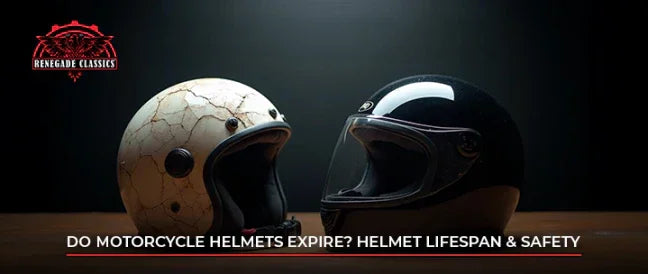Is this the question “ Do Motorcycle helmets expire?” constantly striking your mind? If yes, then it isn’t surprising at all.
Bike riders love to wear fancy helmets before they hit the road and deem them as a trademark sign to show their enthusiasm for bike riding. Casual riders keep using them unless they look fine— with no visible signs of wear.
But here is a catch: Helmets, too, have a shelf life, and wearing expired helmets could lead to fines in some USA states. In this blog, we will answer the question brought up in the beginning of this blog in extensive detail, along with setting forth valuable information about signs of a worn helmet and the duration after which you should consider replacing it.
How Long Does a Helmet Last?
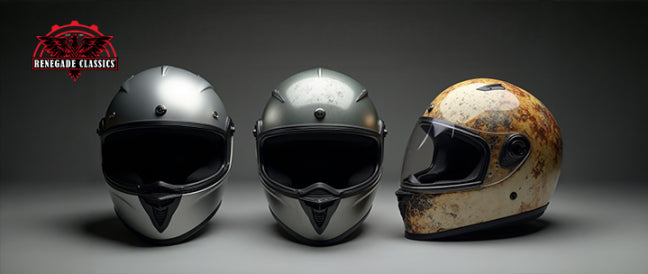
According to the bike accessories manufacturers in the USA, the recommended shelf life of a bike helmet is 5 years. It means the lifespan of a motorcycle helmet is almost 60 months. Regardless of the condition, the helmet should be replaced after this duration to ensure compliance with DOT standards.
The Wear and tear of a helmet is caused due to exposure to sunlight, rainwater and certain chemicals. The more intense the conditions, the higher the rate of deterioration is. Over time, the shock-absorbing capacity of the helmet drops, which increases the risk of heavy injuries if the rider meets an accident. Therefore, it is crucial for bike enthusiasts to replace their helmets before they reach their expiration date, as it could save precious lives and prevent lifelong disabilities.
1- 4 Signs Your Helmets Is Wearing Out
A worn-out helmet exhibits a few signs you should not overlook. These signs are not casual and usually signal how old your helmet is. Take a look at them below:
1.1 Internal Padding Breakdown:
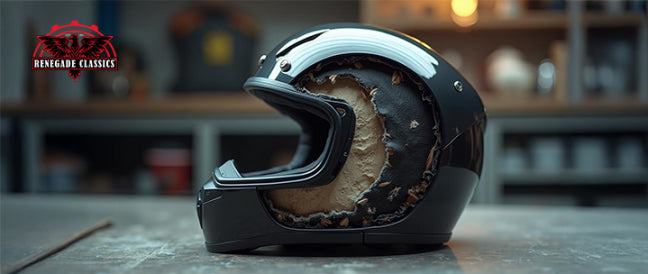
As the helmet ages, its internal padding begins to flatten, tear or lose its cushioning effect. Your helmet will not fit comfortably, often compelling the riders to arrange a makeshift fix to make it wearable. With the deterioration of internal padding, the shock absorption capacity of the helmet gets drastically reduced. When it happens, the internal padding fails to serve its functions: absorbing the impact of sudden falls or sharp pressures during accidents.
1.2 Cracks or Warps In the Helmet Shell:

Noticeable or even minor cracks or dents on the outer shell of the helmet are a red flag. The outer area of the helmet safeguards your head during accidents, developing dents and cracks to neutralize the fall impact. Each time, its protective ability is compromised. Consider replacing it as you are noticing these damage signs because it will not provide the same level of protection in the future.
1.3- Faded Color or UV damage:

When the outer look of your helmet begins to fade— discoloration or fadness— chances are UV rays have degraded its materials. This leads to reduced protection, which could be hazardous to your well-being. No need to cut corners; go ahead and order a quality helmet that ensures safety during the ride.
1.4- Loose buckles and straps:

An ideal helmet fits your head snugly and doesn’t leave its place during a crash. But when buckles and straps— that are responsible for keeping it in one place— begin to loose, the helmet becomes shaggy and is likely to come off even in windy conditions.
Maintenance Tips to Extend Your Helmet Lifespan
The helmet holds critical importance in your biker gear, and its condition determines its value. With proper care, you can ensure the helmet stays with you for a long time and keeps doing its job well—- to protect you during accidents. Below are a few tips you can adopt to increase its longevity and performance:
1- Regular Cleaning:

Use a mild detergent or chemical to wipe its outer shell to maintain its cosmetic appeal. In addition, you can clean the inner padding with a soaked cloth, removing bacterial buildup.
2- Air Drying:

Let your helmet dry in natural air; the drying process helps sweat traces evaporate and remove foul smell. Don’t place the helmet in direct sunlight, as it can degrade its material. Additionally, steer clear from using hair dryers for drying purposes.
3- Handle With Care:
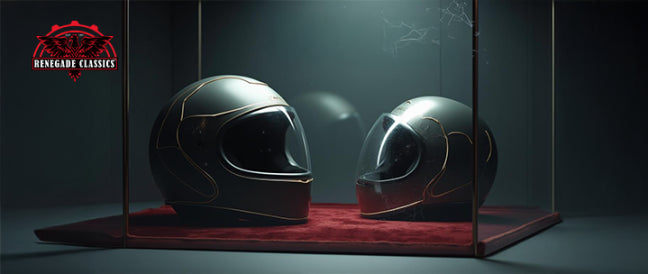
Treat your helmet as a fragile object, as it usually is, and avoid casually dropping it from heights or applying unnecessary pressure on it.
4- Choose Helmets made up of robust materials:

A helmet is likely to stay with you for an extended duration if its composition materials are of high quality. You can opt for helmets made of fiberglass composite, Carbon fiber, and Nylon.
2-How Often Should You Replace Your Helmet?
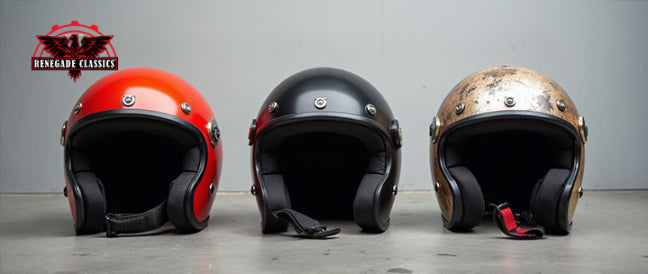
Changing your helmet timely is a life-saving move and reinforces your image as a responsible citizen in the eyes of the Law. You can go for a change when the hamlet ticks any of these boxes:
1- It has served for 5 years, even if it doesn’t show any obvious signs of wear or misfit.
2- After any moderate-intensity crash or accident.
3- It shows signs of deterioration, such as dents, cracks or discoloration.
If you are serious about buying a new helmet, don’t make a rash decision. Read our detailed blog about different kinds of helmets and choose one that fits your needs.
Different types of Motorcycle Helmets Every Biker Should Know
4- Helmet Safety Standards In the USA Every Biker Should Know
Bike riders in the USA should be aware of helmet safety standards to ensure personal safety and comply with the country's rules. All helmets are not equal when it comes to safety. They may look fancy on the surface and mesh with your attire or personality, but they still fail to provide the level of protection you need to survive accidents. In the USA, the Department Of Safety (DOT) defines the minimum safety criterion for helmets sold countrywide in order to foster safe bike rides. Let us walk you through these standards:
1- Every helmet should pass the basic crash test (FMVSS 218 (Federal Motor Vehicle Safety Standard #218), ensuring it can prevent heavy injuries in accidents.
2- Every biker should purchase a helmet that has a DOT label on it, which means the helmet conforms to baseline standards of safety.
Pro Tip:
If a retailer claims its helmet to be durable and protective, but the helmet doesn’t contain a Dot label, don’t buy it. In addition, you can ask the retailer for DOT certification should the label seem fake.
We know you have been through a long read. Why not catch a breath with an eye-opening statistic?
In 2023, 6335 motorcyclists were killed in road accidents, with 1600 drivers without helmets.
Life is precious; do not let it end on the road. Always use a DOT-certified helmet before you begin the journey on a bike.
Tips For Choosing the Right Helmet Replacement
Looking for a helmet upgrade as your old one has been 5 years old or is showing signs of wear? If yes, then follow these tips to ensure every penny you pay adds to your life and makes every journey comfortable:
1- Make sure the retailer has acquired the DOT certification for biker accessories in its stock. Check for DOT labels before finalizing the purchase. A DOT-certified helmet means it has passed the baseline safety requirements and will provide protection when an accident occurs.
2- Choose a helmet that fits perfectly on the head without feeling tight or loose. The padding material should be comfortable to prevent irritation. Additionally, there should be a little space between your head and the inner padding so that any shock may be absorbed effectively.
3- Prefer helmets that are equipped with modern features, such as modular design or compatibility with Bluetooth. You deserve a bike ride that accompanies entertainment.
Interested in knowing about the different types of helmet materials? Read our interesting blog:
What are Motorcycle Helmets Made From? A Complete Guide
The Bottom-line
We believe this blog has answered in detail the question, “Do Motorcycle Helmets Expire?” Keep in mind your life and well-being are much more worthy than a few dollars. So act wisely! Buy a new DOT-certified helmet every time the old one shows signs of wear or has served for 5 years. We wish you countless thrilling bike rides to you in the years to come.
